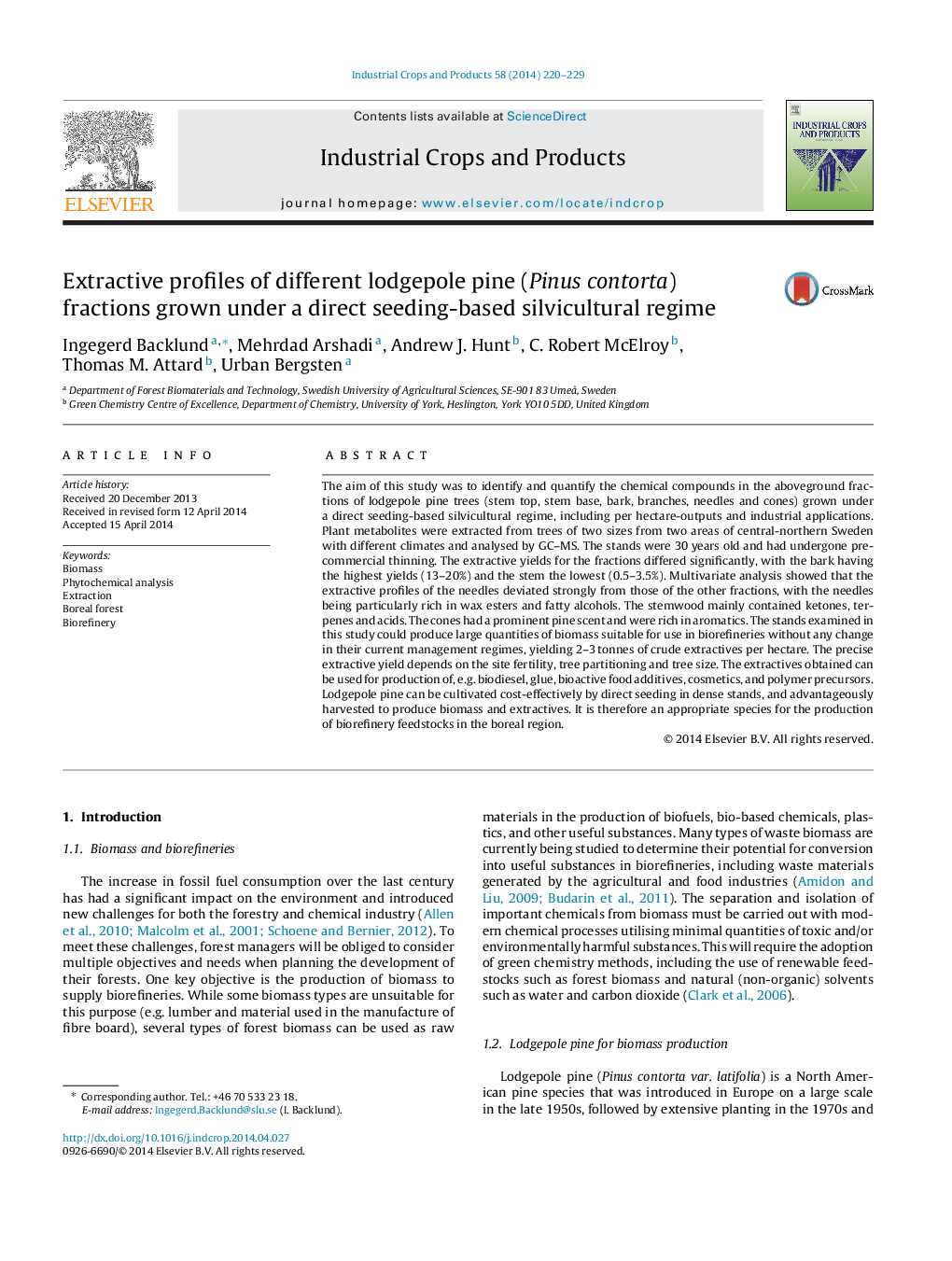| کد مقاله | کد نشریه | سال انتشار | مقاله انگلیسی | نسخه تمام متن |
|---|---|---|---|---|
| 6376724 | 1624851 | 2014 | 10 صفحه PDF | دانلود رایگان |
عنوان انگلیسی مقاله ISI
Extractive profiles of different lodgepole pine (Pinus contorta) fractions grown under a direct seeding-based silvicultural regime
دانلود مقاله + سفارش ترجمه
دانلود مقاله ISI انگلیسی
رایگان برای ایرانیان
کلمات کلیدی
موضوعات مرتبط
علوم زیستی و بیوفناوری
علوم کشاورزی و بیولوژیک
علوم زراعت و اصلاح نباتات
پیش نمایش صفحه اول مقاله

چکیده انگلیسی
The aim of this study was to identify and quantify the chemical compounds in the aboveground fractions of lodgepole pine trees (stem top, stem base, bark, branches, needles and cones) grown under a direct seeding-based silvicultural regime, including per hectare-outputs and industrial applications. Plant metabolites were extracted from trees of two sizes from two areas of central-northern Sweden with different climates and analysed by GC-MS. The stands were 30 years old and had undergone pre-commercial thinning. The extractive yields for the fractions differed significantly, with the bark having the highest yields (13-20%) and the stem the lowest (0.5-3.5%). Multivariate analysis showed that the extractive profiles of the needles deviated strongly from those of the other fractions, with the needles being particularly rich in wax esters and fatty alcohols. The stemwood mainly contained ketones, terpenes and acids. The cones had a prominent pine scent and were rich in aromatics. The stands examined in this study could produce large quantities of biomass suitable for use in biorefineries without any change in their current management regimes, yielding 2-3Â tonnes of crude extractives per hectare. The precise extractive yield depends on the site fertility, tree partitioning and tree size. The extractives obtained can be used for production of, e.g. biodiesel, glue, bioactive food additives, cosmetics, and polymer precursors. Lodgepole pine can be cultivated cost-effectively by direct seeding in dense stands, and advantageously harvested to produce biomass and extractives. It is therefore an appropriate species for the production of biorefinery feedstocks in the boreal region.
ناشر
Database: Elsevier - ScienceDirect (ساینس دایرکت)
Journal: Industrial Crops and Products - Volume 58, July 2014, Pages 220-229
Journal: Industrial Crops and Products - Volume 58, July 2014, Pages 220-229
نویسندگان
Ingegerd Backlund, Mehrdad Arshadi, Andrew J. Hunt, C. Robert McElroy, Thomas M. Attard, Urban Bergsten,